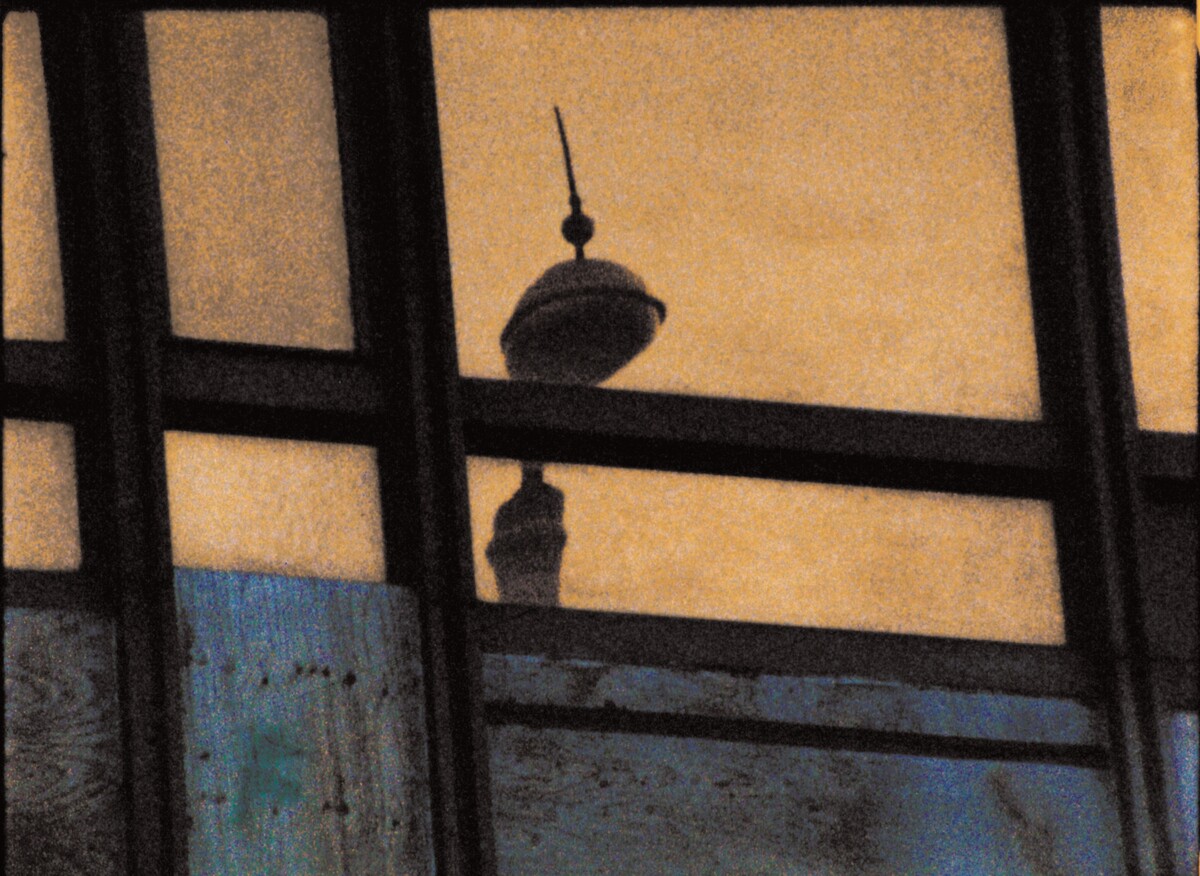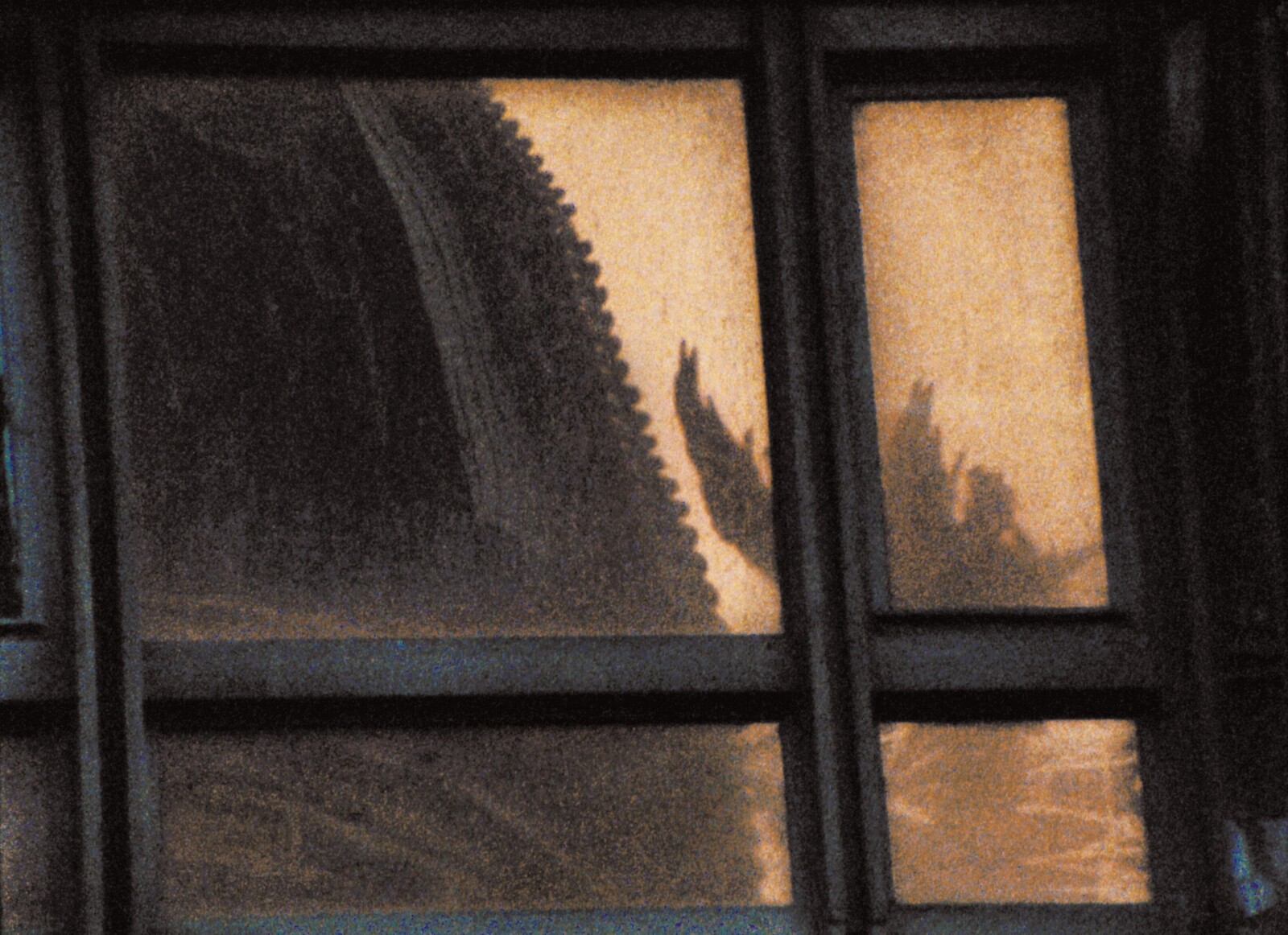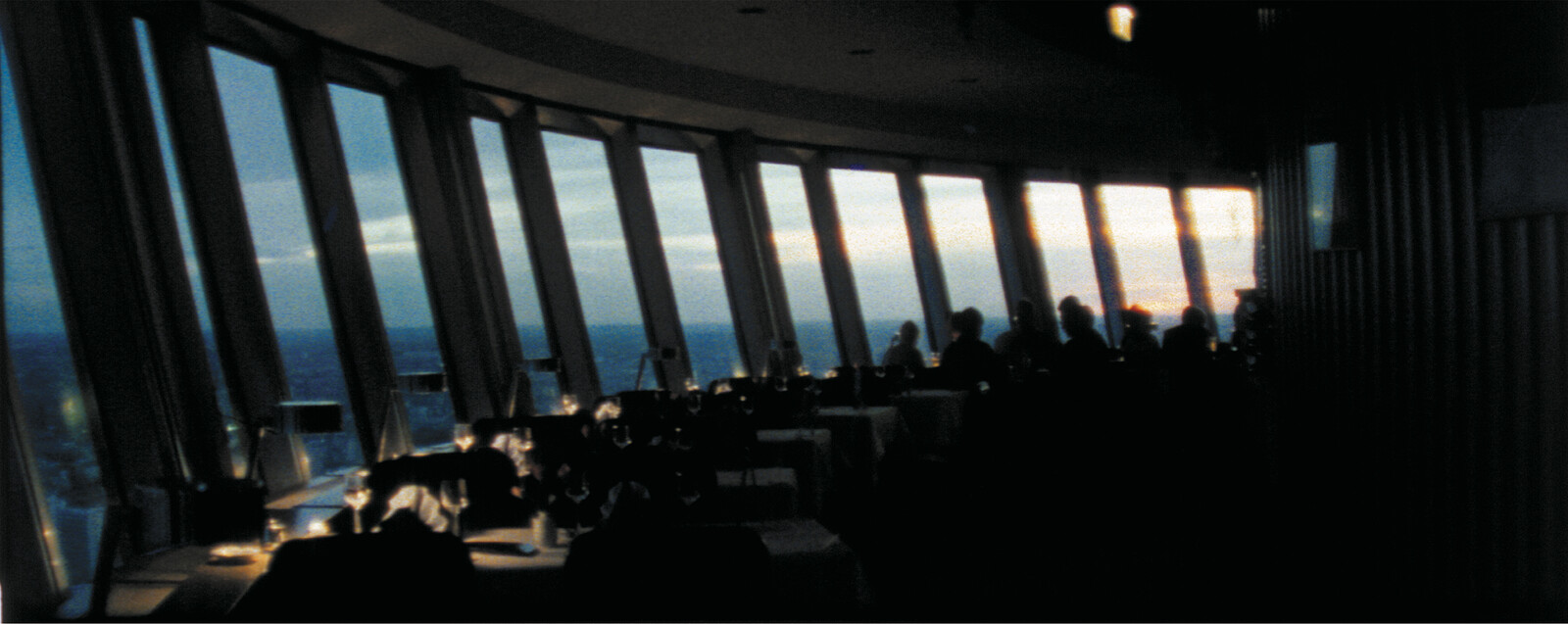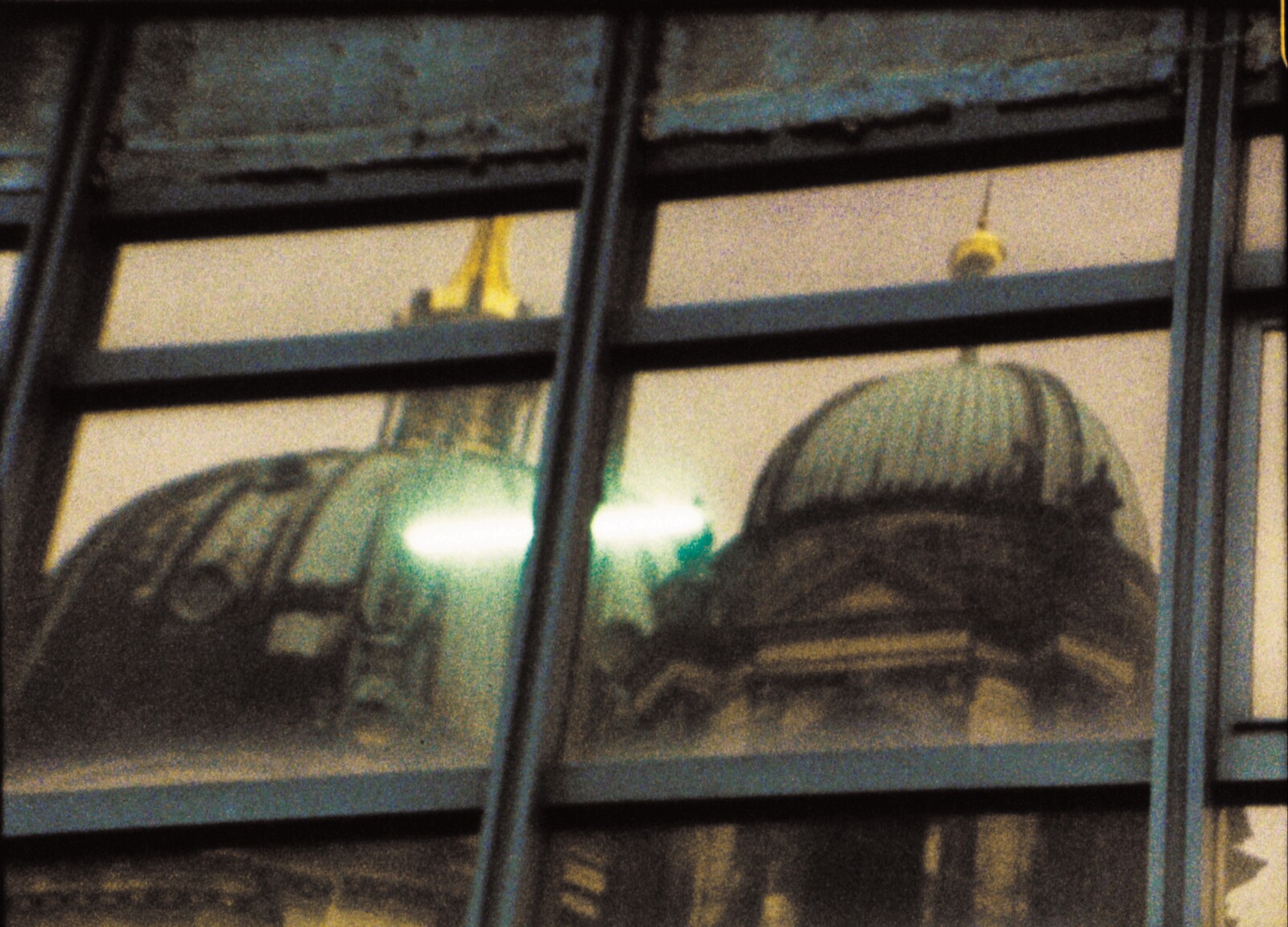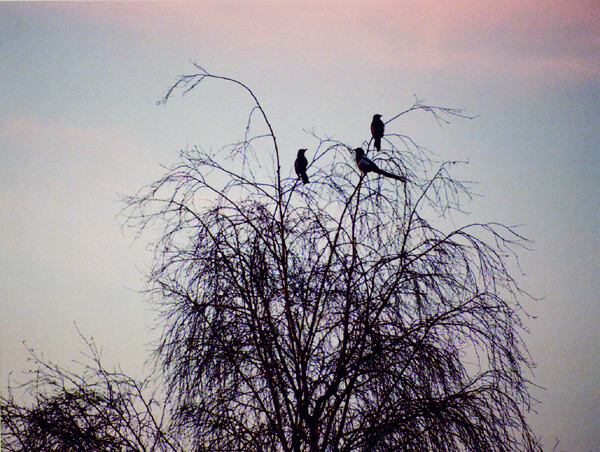The Rearview series addresses blind spots in contemporary art history by returning to an influential exhibition, artwork, or text from the recent past and reflecting on its relevance to the present. To coincide with Erik Morse’s essay on Tacita Dean’s Fernsehturm, Marian Goodman Gallery is hosting a special online screening of the 2001 film. Click here to watch (the screening ends on February 25).
One benefit of a yearlong quarantine has been the rediscovery of interiors as a source of creative reverie. Restrictions to air travel and public spaces have upended an artistic truism—popular among the globetrotting avant-garde of the last century—that, as Christopher Reed wrote, “being undomestic came to serve as a guarantee of being art.”1 Instead, like the eccentric, household narrators of Xavier’s de Maistre’s Voyage autour de ma chambre (1794), J.-K. Huysmans’s À rebours (1884), and Raymond Roussel’s Locus Solus (1914), visual artists have been forced to dwell in interior space, with its glacial boredom, everyday rituals, and isolation. In this protracted period of sequestration, a film made by Tacita Dean at the turn of the millennium offers one guide for artistic travels through the interior.
Fernsehturm (2001) is the first of several projects in which the British artist documents Berlin’s landmarks within the post-unification imagination. The 44-minute film’s premise is meditative in its simplicity: an evening dinner service inside the titular TV Tower’s revolving restaurant. It opens in the circular dining room, where a row of elaborately decorated tables sit along a bank of vertical, picture windows overlooking Berlin’s topography from a height of 600 feet. A lone hostess in black-and-white uniform stands in the middle ground, doling out silverware and arranging chairs. Guests begin to file by, taking their seats or wandering through the architectural folly, to an ambient soundtrack of clinking glasses and indistinguishable chatter. As the hostess moves from table to table in this preparatory ritual, the platform beneath the dining room advances steadily in a centripetal motion, subtly shifting the angle of the surrounding landscape. Recorded on 16-mm anamorphic film in a dewy, retro-flavored taupe-and-blue palette, the imagery evokes the velvety ambience of twentieth-century Hollywood melodrama—Douglas Sirk, Alfred Hitchcock, and Brian De Palma, among others—or the low-budget, German fernsehspiel of Rainer Werner Fassbinder—while the midcentury, flying saucer-like interior suggests 1950s B-movies set inside a deep-space airlock or plague-ridden biosphere. Absent the feature actors, dialogue, or plot of traditional, narrative cinema, this is film distilled to pure mise-en-scène.
The Fernsehturm’s 360-degree revolution lends the film its primary constraint, allowing Dean’s stationary camera to create suspenseful moments with little more than tables, crowds of customers, windows, and an electric organ. Her democratic viewfinder trains on the blurry eaters, indecipherable chitchat and (mostly) obstructed vistas of the city, and duly transposes these background supernumeraries and quotidian rituals to the foreground. In this insular world, small objects acquire a heightened resonance—such as when a simulated dolly shot inches along the bar, observing the compartments of cakes and saucers. Tucked in an alcove, a shadowy keyboardist plays an old pop standard. Slowly, however, the intricate lattice of minor characters proceeds to disappear as the evening crepuscule turns to night, replaced by shadows from the restaurant interior’s ambient glow. With the encroaching darkness, the room’s widescreen windows, spools of light and organ accompaniment begin to resemble a movie theatre. In the resulting panoptical fantasia, Fernsehturm proves itself to be a tourist’s film in which everyone, and everything, in its interior becomes the cynosure of the viewer.
The novelist Jeanette Winterson—one of the few writers to examine the film at any length—mused that the film positions the viewer as a dreamer “outside of time” who watches “with a weightlessness that contrasts to the solidity of what we are asked to observe.”2 Indeed, the film’s temporal and spatial phenomenology recall Andy Warhol’s playful justification for producing Empire (1964)—his eight-hour, single-shot film of the Empire State Building—on the grounds that he wanted “to see time go by.” Like Empire, many of the most important experiments in durational cinema employ an architectural conceit. In Last Year at Marienbad (1961), for instance, Alain Resnais uses the salons and halls of a baroque chateau’s interior as a spatial metaphor for its protagonists’ struggles with amnesia (and possible trauma) as they meet, depart, and reencounter each other. Produced the following year, Chris Marker’s La Jetée employs the landscape photographs of an airport concourse and tower as the climactic setting for his reverie on time-travel and temporal dissociation. Other archetypes of the genre, like Michael Snow’s Wavelength (1967) and Chantal Akerman’s Hotel Monterey and La Chambre (both 1972), similarly avail themselves of a focal landmark or landscape—some interior, others exterior—to reconceptualize the mechanics of film space in the absence of conventional, narrative rhythms. Fernsehturm, a formalist descendent to these films, is also a forebear and direct influence on the contemporary genre of slow cinema—including Eija-Liisa Ahtila’s The House (2002), Tsai Ming-liang’s Goodbye Dragon Inn (2003), Gus Van Sant’s Elephant (2003), and Sharon Lockhart’s Lunch Break (2008)—popular as part of a broader, “slow” movement that prioritizes the aesthetic and political rebuke of accelerationism.
The Fernsehturm’s divisive political and architectural history made it an ideal candidate for Dean’s first project documenting the German landscape. Both a technological necessity and propagandist spectacle, the tower was constructed at great expense by the GDR government between 1965 and ’69, after which it was reportedly used as an unofficial headquarters of the Stasi. Yet its imposing stature unintentionally provided the East with a permanent view of the wealth of the West. Following reunification the tower was recuperated as a citywide symbol of western sovereignty and international tourism, welcoming over a million guests annually to gaze over the restored German capital. That the tower’s rotating mechanism doubled in speed—under GDR authority, a full rotation took one hour; today it is half that time—suggested that the urgency of capital required an accelerated experience of space.
During lockdown, Dean’s documentation of post-Cold War architectural and political hegemony bears a spectral—and more disturbing—envisioning of the fragility of the interior: the collapse of the World Trade Center. The World Trade Center’s North Tower hosted a similar rooftop destination, Windows on the World restaurant, which was portrayed as the buildings’ crown jewel and appeared in numerous news photographs and films. Fernsehturm was filmed months prior to 9/11, yet the nameless diners standing and pointing through the picture windows may bring to mind tourists looking out from the North Tower toward the Manhattan skyline. In this context, the retroactive acrophobia embedded in the film’s gaze provides it with another layer of meaning: the aerial perspective is no longer omniscient, and nor is the skyscraper’s interior indestructible.
With Fernsehturm, Dean’s subsequent short films Pie (2003) and Palast (2004) constitute a triptych devoted to Berlin. All three document a particular landmark or liminal space within the city by means of limited or obstructed viewpoints: what writer Tara McDowell describes as Dean’s “optics of refusal.”3 But where Fernsehturm endeavors to look out, Palast attempts to look in. The camera trains exclusively on the GDR parliament’s Palast der Republik, an abandoned Brutalist complex whose banks of opaque windows act as giant screens vividly reflecting a louring sunset alongside neighboring rooftops, street lamps, statuary, and domes—including the Fernsehturm’s crown. The seven-minute Pie, the briefest and most intimate of the triptych, was shot from a window of Dean’s studio next to the Hamburger Bahnhof and records a flock of chirruping magpies nesting in a tree. The scene’s painterly interplay of sunlight and spindly thicket evokes the forest landscapes of Caspar David Friedrich or Oswald Spengler’s “fitful light-flecks playing in their shadow-filled volume.”4 Much like the other two films, Pie is a tone poem focused on the thresholds of interiority where the often incidental and invisible details of time, shadow, and light are rendered starkly visible.
Twenty years after its release, Fernsehturm’s cinematic travels through the urban landscapes of the new millennium seem prescient. Dean’s keen ability to document a single, otherwise unremarkable evening and reimagine it as a detailed study of inner-space highlights the extraordinary potentials for narrative invention—and visual pleasure—in a setting reduced to spatial and durational miniature, much like those experienced in a world beset by quarantine. In doing so, she also proves how the interior and the everyday domestic can become sites of political, aesthetic, and architectural reverie.
Christopher Reed, ed., Not at Home: The Suppression of Domesticity in Modern Art and Architecture (London: Thames & Hudson, 1996).
Jeanette Winterson, ‘‘“Much ado about nothing,” the Guardian (September 29, 2005) https://www.theguardian.com/film/2005/sep/29/1.
Tara McDowell, “Tacita Dean’s Optics of Refusal” in The City and the Moving Image, eds. R. Kopeck and L. Roberts (London: Palgrave Macmillan, 2010).
Oswald Spengler, The Decline of the West (Oxford: Oxford University Press, 1918, abridged edition, 1991).
